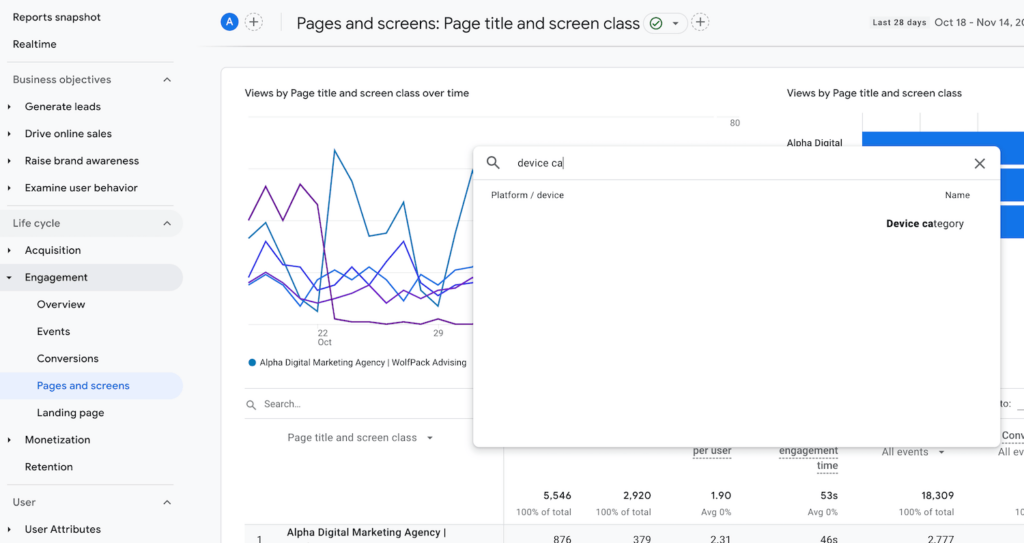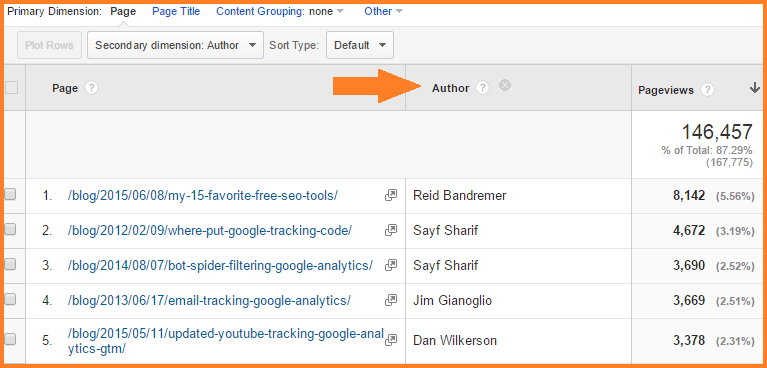Grasping the 'Secondary Dimension' in Google Analytics: Complete Introduction
Grasping the 'Secondary Dimension' in Google Analytics: Complete Introduction
Blog Article
Translating the Value of Additional Dimension in Google Analytics: All Concerning Its Significance and Effect
In the world of digital analytics, the use of additional dimensions within Google Analytics serves as a pivotal tool for discerning deeper layers of information insights. The relevance of second measurements lies in their ability to offer a nuanced view of individual actions and communication with an internet site or platform.
Recognizing Additional Dimensions in Google Analytics
The understanding of additional measurements in Google Analytics is necessary for acquiring much deeper insights right into user behavior and web site performance. While main dimensions supply fundamental information points such as website traffic resources and web page sights, additional dimensions permit a much more nuanced analysis by giving additional context to these key metrics. By integrating second dimensions, customers can segment and filter their data to uncover patterns and patterns that may not be right away apparent.

Unveiling the Conveniences of Additional Measurements
Structure upon the foundational understanding of secondary measurements in Google Analytics, checking out the advantages they supply discloses vital understandings for boosting data evaluation and decision-making. By incorporating additional measurements, individuals can delve much deeper into their information, acquiring a more thorough sight of customer habits, material performance, and various other vital metrics. Among the primary benefits is the capacity to sector information, permitting a much more granular evaluation of various measurements such as traffic sources, tools, demographics, and a lot more. This segmentation enables users to determine patterns, fads, and relationships that might not be evident when taking a look at information in aggregate.
Additionally, additional dimensions give context to primary data, providing extra layers of information that can help in comprehending user communications and preferences. This improved understanding can direct tactical decision-making, resulting in even more targeted advertising and marketing projects, internet site optimizations, and general enhanced performance. In significance, secondary dimensions serve as an effective device for opening much deeper insights and taking full advantage of the energy of Google Analytics for organizations and site owners.
Leveraging Second Measurements for Boosted Insights
By utilizing the power of secondary measurements in Google Analytics, businesses can uncover much deeper insights that drive informed decision-making and strategic optimization initiatives. Leveraging secondary measurements enables services to dive beyond surface-level information and obtain a much more thorough understanding of individual actions, audience demographics, traffic sources, and internet site efficiency. By integrating key dimensions like web traffic sources with additional dimensions such as geographical area or device category, organizations can recognize which tools or areas are driving the most important website traffic to their website.
Moreover, second dimensions make it possible for businesses to section and examine information better, assisting them identify fads, patterns, and chances that might have or else gone unnoticed. By utilizing additional measurements, organizations can tailor their marketing techniques, content, and user experience to better meet the demands and preferences of their target audience. Fundamentally, leveraging additional measurements in Google Analytics encourages companies to make data-driven choices that bring about enhanced performance, enhanced ROI, and lasting growth.

Effect of Additional Dimensions on Data Evaluation
Enhancing information analysis via the use of additional measurements in Google Analytics supplies businesses with a deeper understanding of their online efficiency metrics. By including secondary measurements, such as time of day, geographical location, or device classification, businesses can discover useful understandings that might have been ignored with main dimensions alone. This improved level of granularity permits for more specific division of information, making it possible for businesses to recognize patterns, trends, and connections that can drive strategic decision-making.

Making The Most Of Prospective: Additional Capacities Techniques
The strategic utilization of secondary measurements in Google Analytics extends past improving data analysis; it entails crafting targeted strategies to open the full capacity of beneficial understandings for company development. By utilizing secondary dimensions efficiently, businesses can delve much deeper right into their web site web traffic, user behavior, and advertising and marketing projects to extract actionable understandings. One essential method is to combine secondary measurements with key measurements to gain a detailed sight of customer communications. As an example, matching the main dimension of 'source/medium' with additional dimensions like 'touchdown web page' or 'gadget classification' can reveal which channels are driving website traffic to particular pages or just how user habits differs throughout tools.
Furthermore, utilizing second dimensions to sector data based on user demographics, actions, or technology can aid businesses tailor their advertising and marketing efforts to certain target market sectors. This targeted strategy can cause improved conversion prices, improved individual experiences, and eventually, boosted ROI. By taking full advantage of the capacity of additional dimensions in Google Analytics, companies can make educated decisions, maximize their on the internet presence, and drive sustainable development.
Verdict
Finally, secondary dimensions in Google great post to read Analytics play a vital duty in offering much deeper understandings and improving information evaluation. By utilizing additional dimensions efficiently, services can obtain an extra comprehensive understanding of customer behavior and web site efficiency. Integrating second dimensions right into information evaluation methods can lead to more educated decision-making and improved general efficiency. It is crucial for organizations to take advantage of the power of additional dimensions to maximize their possible and attain greater success in their on-line undertakings (what is a “secondary dimension” in google analytics?).
While primary dimensions supply fundamental data factors such as traffic resources and page views, secondary dimensions enable for an extra nuanced analysis you can try this out by giving extra context to these main metrics. By integrating main dimensions like web traffic resources with additional dimensions such as geographic location or device category, businesses can recognize which regions or tools are driving the most useful traffic to their website.
By including secondary measurements, such as time of day, geographical area, or tool group, organizations can discover beneficial understandings that may have been forgotten with main measurements alone. One crucial approach is to integrate secondary dimensions with key dimensions to acquire a thorough sight of user interactions. Matching the key measurement of 'source/medium' with secondary dimensions like 'touchdown web page' or 'device classification' can disclose which networks are driving web traffic to specific pages or just how user habits differs across gadgets.
Report this page